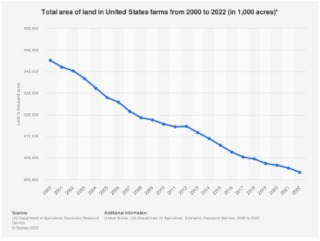
Argentina Planting Growth Likely to Increase
Heath reported that Argentina’s “soy planting area has declined in recent years, competing with corn for space. But fears that a leafhopper plague like one that ravaged the last corn harvest could hit the fields again is likely to knock an estimated 2 million hectares (4.9 million acres) off corn planting – favoring soy.”
“‘Of those 2 million hectares of corn not being planted, a large part will go to soybeans,’ said Cristian Russo, head of agricultural estimates at the Rosario grains exchange, which estimates 16.8 million hectares were planted with soy last year,” Heath reported. “Aníbal Córdoba, a farmer and member of a growers group present in northern provinces including Chaco and Santiago del Estero, said producers were building more soy into their plans.”
“‘Our group usually plants 35% to 40% of our land with corn, but this time we’re going to do an average 20-25%. Of what’s not going to corn, almost all will be replaced with soy,’ he said,” according to Heath’s reporting.
“A jump for soy by anything near 2 million hectares could be the largest since a 1.2 million year-on-year increase in 2012, 1.4 million in 2008 or even 1.9 million hectares in 2003,” Heath reported.
Brazil Planting Growth Likely to Slow
Braun reported that the expected slowest soy planting growth in Brazil in a decade “is logical, as the largest annual soy area increases in Brazil came during periods of lower global stocks and stocks-to-use, and vice versa.”
“According to Brazilian statistics agency Conab, yearly increases in soy plantings within the last four seasons range from 4.4% to 7%, though they spanned 2% to 3.7% between 2015-16 and 2019-20, when prices were low and supplies were high,” Braun reported.
Slower soy planting growth in Brazil is unlikely to prevent global stocks from swelling, however, as the “USDA sees global soybean stocks hitting all-time highs in 2024-25, almost 22 million metric tons more than in the prior year, and stocks-to-use are pegged barely shy of 2018-19’s record,” Braun reported.
“Brazil will play a large role in generating the surplus of beans as USDA projects a soy crop 16 million tons (10%) larger than in the prior season, with area rising 3.3%, though global soybean consumption is set to rise just 5% on the year,” Braun reported. “Brazilian farmers will start sowing soybeans for the 2024-25 harvest next month.”
Source : illinois.edu